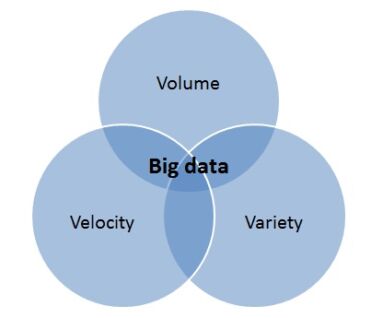Big Data and Its Importance for Association Decision-Making

Every day, people using the internet create more than 2.5 quintillion bytes of data. Analysts predict that number will exceed 463 exabytes worldwide by 2025. This kind of information is incredibly valuable for companies and associations when it comes to connecting with their target audience.
For associations specifically, this type of information — known as “big data” — can reveal patterns and trends, as well as provide deeper insights into what excites members and potential members.
[Related: Membership Retention Basics: What Your Association Needs To Know]
Examples of Big Data
The types of big data that companies collect and use are seemingly endless. Because people are more active online than ever before, the data categories touch on almost every aspect of their lives.
Main examples of big data include the following:
- Purchases
- Delivery methods
- Website and application use
- Social media use
- Navigation and travel
- Location
- Music, podcast and audiobook listening habits
- Streaming viewing habits
- Environmental and weather data
Examples of Big Data Providers and Sources
Every website, company, association and organization plays a part in collecting big data, but some entities mine it more effectively than others. For example, Amazon collects a ton more data about purchasing habits, location and delivery methods, whereas Spotify is a master at mining music and audiobook trend data.
Big data also comes from government databases in relation to education, public assistance, health and transportation services, among other areas.
Even if you’re a smaller organization or association, you still collect big data from a variety of places and in a variety of ways. Here are only a few examples:
- Event registrations
- Publications and product purchasing
- Customer relationship database information
- Financial and billing data
- Email and newsletter engagement
- Social media engagement
[Related: The Membership Recruitment Plan Every Association Should Implement]
History of Big Data and the Three Vs
In 2001, analyst and author Doug Laney popularized the term “big data.” He broke it down using three defining categories — the three Vs.

Image via Big Data: The 3 Vs Explained.
Volume
First and foremost, big data is about volume. Every day, people create and store more and more data on devices and servers like the cloud. The vast amount of data collected can help associations shape their path forward and track progress from the past.
Velocity
Big data is also all about growth and change. Velocity measures how fast the data comes in, whether that means people create it live in real time (e.g., ad clicks, website views) or send it in batches from a certain period (e.g., donor habits during the holiday season).
Variety
While people once collected data in one file format from a database, big data has taken a variety of forms in recent years. Data can appear in anything from videos and images to text and social media clicks.
[Related: No Silver Bullet for Association Success — It’s About the Members]
Benefits of Using Big Data for Decision-Making
When it comes to big data analytics in support of the decision-making process, research shows businesses that use big data when making decisions realize up to a 10% increase in profits and a 10% decrease in overall costs.
But what exactly is the benefit, and how can associations use big data and decision-making together?
Big data can help associations respond to market changes, develop future business plans and increase revenue simply by showing what members and potential members are looking for and how they’re behaving.
Moreover, big data can assist associations in an array of tactics:
- Assessing services and products
- Discovering how to best tell compelling stories that resonate with an audience
- Identifying member or potential member patterns and donor patterns
- Finding new opportunities to engage with your community and further your mission
- Coming up with new revenue opportunities
- Identifying member perks that provide value to your audience
- Collecting member and community feedback to create an indispensable dialogue
- Seeing the bigger picture and making future plans according to it
- Filling data storage and cybersecurity gaps
Don’t Just Collect Big Data — Use It
Remember: You can’t stop at merely gathering data, no matter how much you end up getting.
Think of it like collecting books. Yes, you may feel smart and cultured with a full bookcase, but you’re only going to learn and use that knowledge to your advantage when you read the pages. Big data and decision-making go hand in hand.
Associations must analyze the big data they obtain and determine how to use it to make it valuable for decision-making. Consider how the data relates to your goals. Then, evaluate how learning more about your audience in this way can help your association connect, succeed and grow its mission.
[Related: Smart Financial Management for Nonprofit Organizations]
Partner With CM Services and Grow Your Association With Big Data
Is your association interested in embracing big data decision-making, streamlining operations, increasing its project management skills, overcoming obstacles and finding success?
Partnering with an accredited and professional association management company like CM Services can be your first step. We’ll collaborate with your volunteer leadership and offer innovative solutions to help your not-for-profit achieve the very best results.
At CM Services, we help associations overcome challenges and meet goals with professional services like these:
- Strategic and operational planning
- Marketing
- Events
- Sponsorship and advertising
- Project management
- Publications
Contact us today for further information and support when analyzing big data and decision-making for your association’s board!
Featured image via Unsplash


